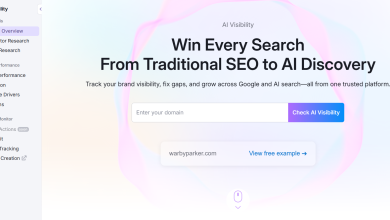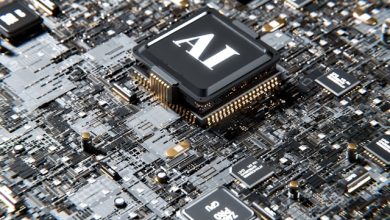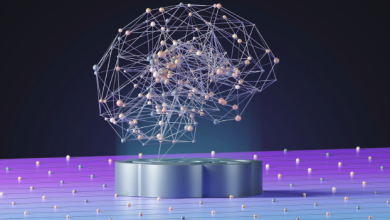
As organizations bring generative AI and automation into day-to-day operations, the nature of work is changing. The most forward-looking companies aren’t focused on whether AI will replace jobs. They’re focused on how it will reshape teams, redefine roles, and expand what their people can accomplish.
That’s why treating AI purely as a technology initiative misses the mark. Its impact is ultimately about people—how they interact with it, how it supports their work, and how they grow alongside it.
We’re entering a new era of talent strategy—one where AI isn’t something your workforce uses. It’s part of the workforce itself.
A New Model for Talent
To succeed with AI, organizations need a more expansive view of talent. One useful framework is the AI Talent Operating Model, which introduces AI as a fourth talent category alongside full-time employees, contractors, and outsourced teams.
This model reflects the reality that AI isn’t just a system sitting on the sidelines—it’s actively contributing to outcomes. Think of it as a teammate that never sleeps, constantly processes data, and handles repetitive work so humans can focus on higher-value thinking.
Already, companies are seeing results. In customer operations, AI is reducing call resolution times. In project management, it’s tracking action items and surfacing risks. In recruiting, it’s screening resumes and writing job descriptions. But the organizations getting it right aren’t chasing use cases—they’re aligning AI with real business goals and workforce needs.
HR’s Expanding Mandate
As AI shifts how work gets done, HR’s role is evolving just as rapidly. Chief People Officers and talent leaders are no longer just stewards of hiring and development—they’re central to preparing the workforce for a hybrid future, where AI and humans collaborate side by side.
Gartner recently found that the share of HR leaders piloting generative AI doubled in six months. Adoption is happening—but the challenge is making it meaningful. Too often, AI initiatives stall because they aren’t paired with cultural readiness, employee training, or clear role redesign.
Success starts by clarifying AI’s role in the organization: What is it here to do? What problems will it solve? Where does human oversight matter most? These questions aren’t just technical—they’re strategic and cultural.
Build Skills, Not Just Systems
Another lesson from early adopters: access alone doesn’t create impact. AI tools are only as effective as the people using them. And right now, skills gaps are widespread.
Pew Research found that while many workers are beginning to use AI tools, only a fraction have received any formal training. At the same time, a growing share of professionals say critical thinking, communication, and adaptability are becoming more valuable as AI takes on more routine tasks.
This suggests a clear priority for HR and learning leaders: build AI fluency across the organization. Not every employee needs to be a developer—but every employee should understand how AI works in their role, what it can (and can’t) do, and how to use it responsibly.
One effective approach is learning by doing. During an internal AI challenge we hosted at West Monroe, employees submitted over 40 practical use cases across functions. That hands-on experimentation not only surfaced value-driving ideas—it created momentum for adoption by making AI feel relevant and accessible.
Designing for a Skills-Based Future
As AI reshapes roles, traditional job titles will become less useful in workforce planning. Instead, leading organizations are pivoting to a skills-based model—where work is structured around capabilities, not job boxes.
This shift allows for more agile teams, better career mobility, and more equitable talent decisions. It also ensures that employees aren’t stuck in static roles as automation evolves. By mapping skills to tasks—and adjusting as AI takes on more responsibilities—companies can more effectively balance human judgment with machine efficiency.
It’s a model that also benefits employees, who gain clarity on what to learn next, where to grow, and how their roles may evolve over time.
Culture Is the Catalyst
The biggest determinant of success with AI? Culture.
Organizations that lead in adoption do more than deploy tools. They create cultures of curiosity, transparency, and continuous learning. They reward experimentation. They talk openly about how AI supports—not threatens—their people. And they embed AI into strategy from the start.
One food and beverage company, for example, narrowed 85 potential AI use cases down to just eight, based on strategic value. That focus helped unlock $30 million in growth opportunities—not because they had the most ideas, but because they chose the right ones and aligned their teams accordingly.
What HR Leaders Can Do Now
To navigate this shift and position their teams for long-term success, HR leaders should:
- Redefine the team model: Treat AI as a contributor, not just a capability.
- Invest in fluency: Equip all employees with baseline AI understanding.
- Prioritize human strengths: Focus on critical thinking, empathy, and creativity.
- Update workforce planning: Design roles and org structures with skills in mind, not titles.
- Embed responsible AI use: Align implementation with ethics, equity, and business value.
A Collaborative, Augmented Future
AI is here—and it’s already changing how teams work, learn, and lead. But its greatest value doesn’t come from automation alone. It comes from augmenting the human workforce—freeing people to solve bigger problems, make better decisions, and create deeper impact.
The organizations that treat AI as a partner in performance—not just a tool—will be the ones that lead their industries into the future.
The question isn’t whether AI will transform work. The question is whether we’re ready to transform with it.





